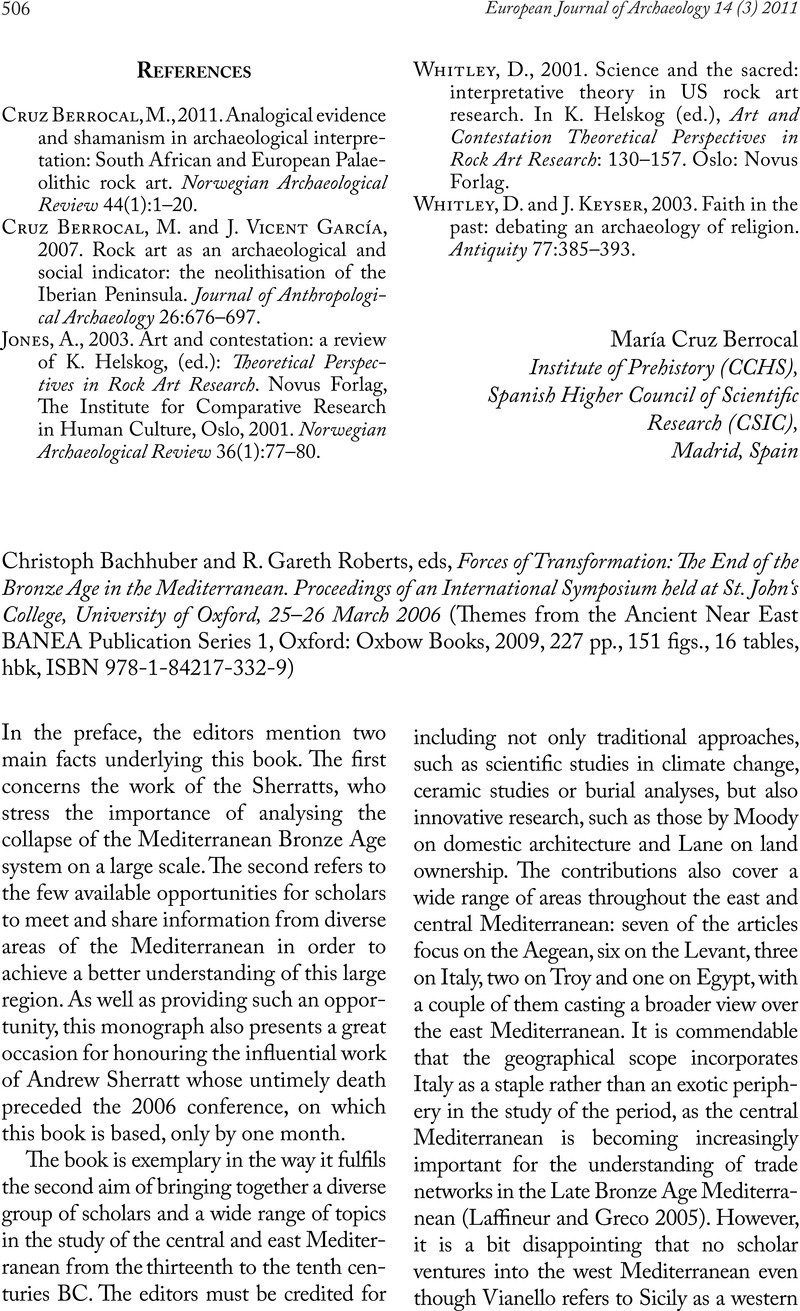Sherratt, A.G. and
Sherratt, S.,
1998.
Small worlds: interaction and identity in the Ancient Mediterranean. In
Cline, E.H. and
Harris-Cline, D. (eds),
The Aegean and the Orient in the Second Millennium: Proceedings of the 50th Anniversary Symposium, Cincinnati, 18-10 April 1997:
329–
343. Program in Aegean Scripts and Prehistory.
Liège and Austin:
Université de Liège. Histoire de l'Art et Archéologie de la Grèce Antique and University of Texas, Aegaeum 18.
Google Scholar 